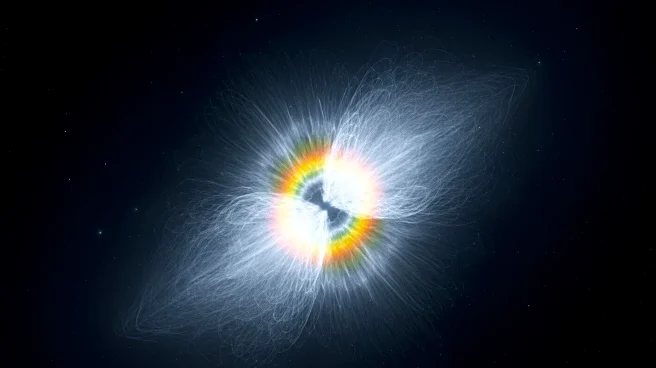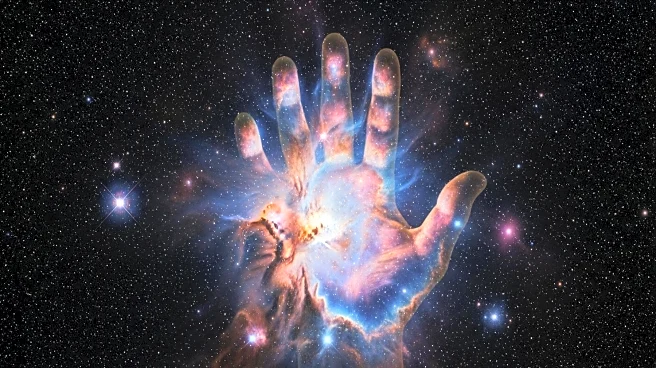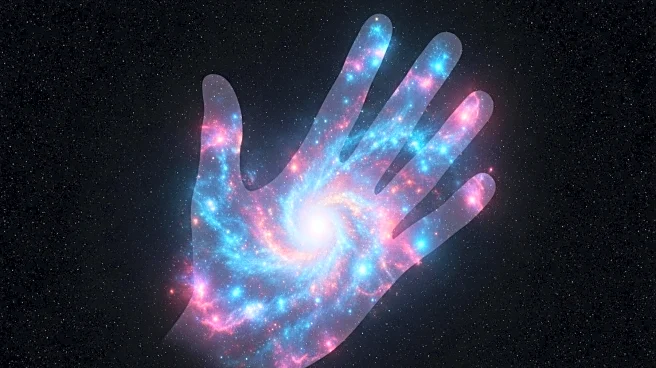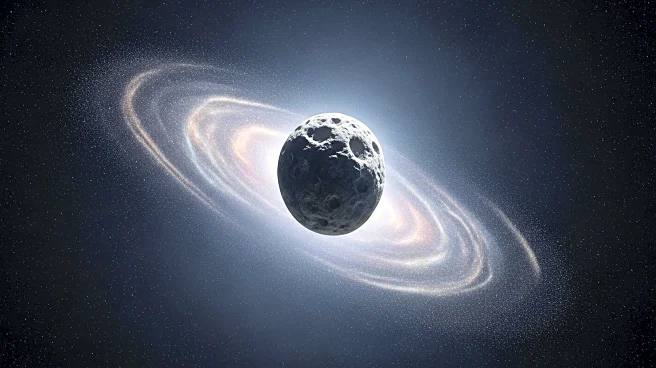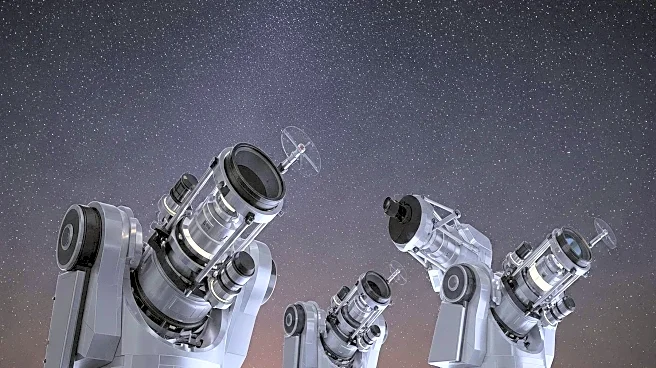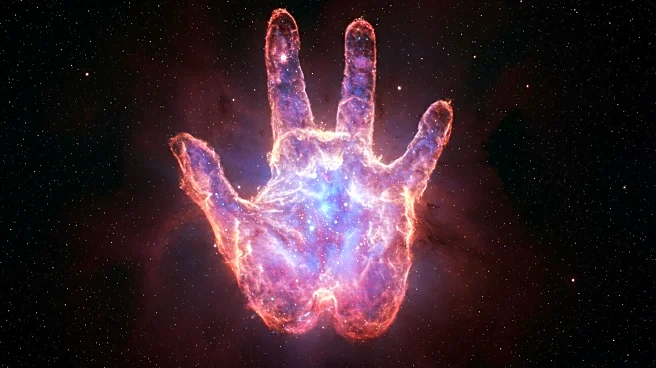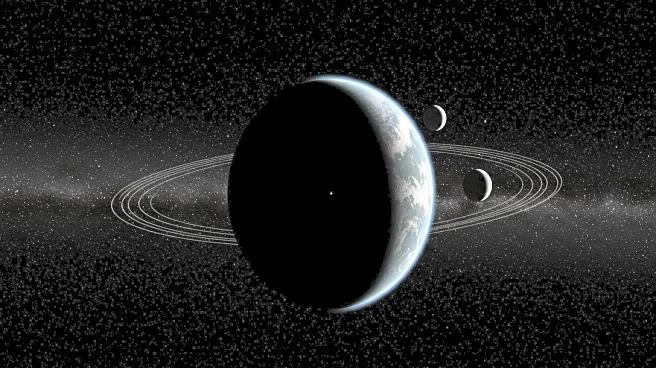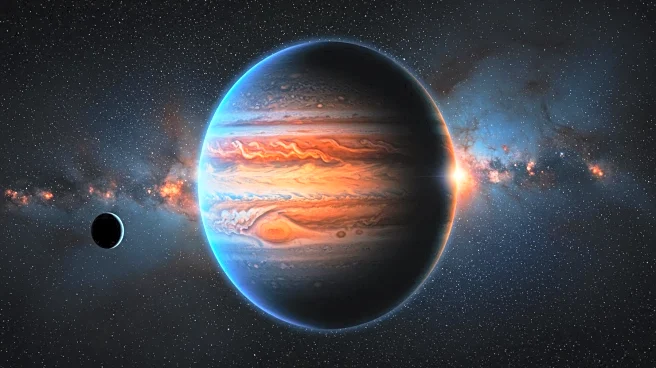What's Happening?
NASA's Chandra X-ray Observatory has released new data on the pulsar B1509-58, a rapidly spinning neutron star located near the center of an intricate nebula. The pulsar, which is only about 12 miles in diameter, is responsible for creating a nebula that resembles a human hand. This new image combines radio data from the Australia Telescope Compact Array with X-ray data from Chandra, providing a fresh view of the exploded star and its environment. The pulsar and its surrounding nebula were first imaged by Chandra in 2009, and the updated data aims to help scientists understand the peculiar properties and shape of this cosmic phenomenon.
Why It's Important?
The new insights into pulsar B1509-58 are significant for astrophysics as they offer a deeper understanding of neutron stars and their environments. Neutron stars are remnants of supernova explosions and are among the densest objects in the universe. Studying them can provide valuable information about the life cycle of stars and the dynamics of cosmic phenomena. The intricate nebula created by the pulsar also serves as a unique laboratory for studying the interaction between high-energy particles and magnetic fields, which can have broader implications for understanding cosmic radiation and its effects on space exploration.
